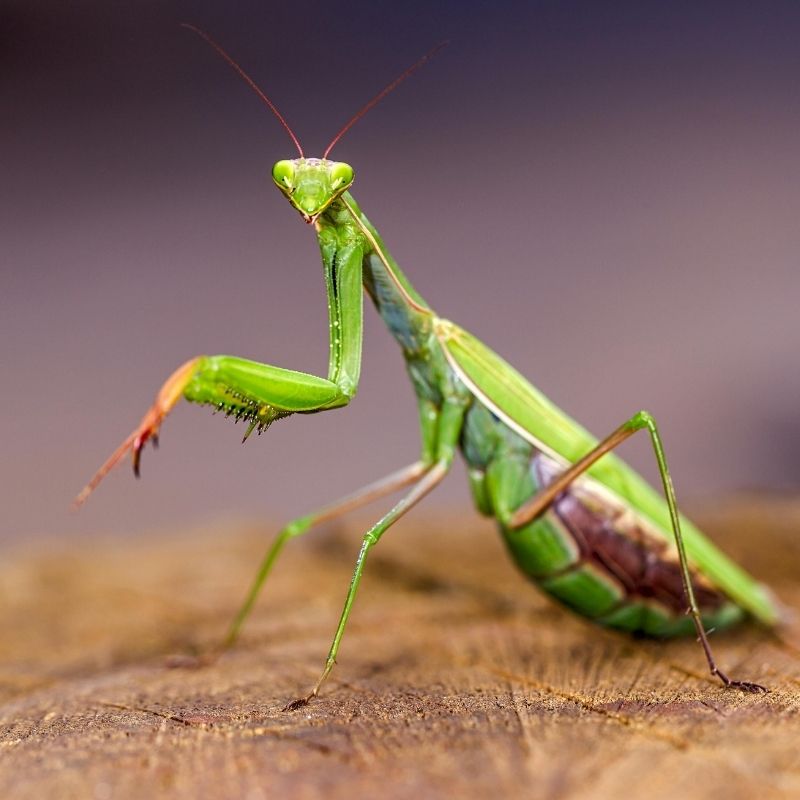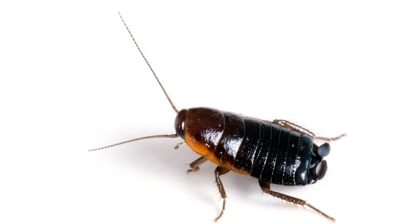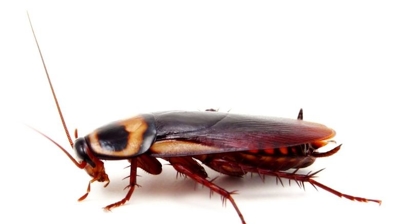
Praying Mantis Control Services

Are Praying Mantises Harmful?
While praying mantises are often viewed as beneficial insects due to their appetite for pests, they can also be considered harmful or problematic in certain situations. Here are some of the ways praying mantises might be considered harmful:
- Non-Selective Predation: Praying mantises are opportunistic predators that feed on any insect they can capture — including beneficial species such as honeybees, butterflies, and ladybugs. This lack of discrimination can disrupt the natural balance in gardens or agricultural ecosystems where beneficial insects are essential for pollination and pest control.
- Impact on Pollinators: Mantises often position themselves near flowering plants to ambush prey, leading to the unintended killing of pollinators like bees and butterflies. Over time, this can reduce pollination activity and negatively affect crop yields or ornamental plant reproduction.
- Invasive Species Concerns: Some mantis species introduced for pest control — such as the Chinese mantis (Tenodera sinensis) and European mantis (Mantis religiosa) — have become invasive in North America. These species can outcompete and prey upon native mantises, reducing biodiversity and altering local ecosystems.
- Threat to Small Wildlife: Large mantises have been documented preying on small vertebrates such as hummingbirds, frogs, and lizards. Although rare, such behavior highlights their potential to affect wildlife beyond insects.
- Limited Pest Control Effectiveness: Because praying mantises do not target specific pest species and reproduce relatively slowly, their presence alone rarely provides meaningful, sustained pest management. Relying on them as a natural control method can lead to disappointment and continued pest issues.
- Potential for Overpopulation in Artificial Settings: In some cases, people release large numbers of mantises (especially non-native egg cases) into gardens or greenhouses expecting pest relief. If the mantises deplete available prey, they may turn on each other or leave the area, creating imbalance without solving the pest problem long term.
While praying mantises can play a role in natural pest reduction, their indiscriminate feeding habits, invasive tendencies, and potential impact on beneficial species make them a mixed blessing in managed environments.
Praying Mantis Control
Although praying mantises are often beneficial predators, there are times when homeowners or business owners may want to discourage or remove them — especially if they are preying on pollinators, becoming overabundant, or are non-native species. Because mantises are protected in some regions and play an important ecological role, any removal effort should be humane, environmentally responsible, and legally compliant. Here’s how someone can get rid of unwanted praying mantises safely and effectively:
Remove or Relocate Egg Cases (Oothecae)
- Identify and locate egg cases: Mantises lay foam-like egg masses, often on shrubs, tree branches, fences, and garden structures. They are about 1 inch long and tan or light brown in color.
- Carefully cut or scrape them off: Use garden shears or a knife to remove the ootheca from surfaces.
- Relocate or destroy: If you simply want to reduce their numbers, move the egg cases far away from your property (e.g., into a wooded area). If removal is necessary, seal them in a bag and dispose of them in the trash so they cannot hatch.
Modify the Habitat
- Reduce dense vegetation: Praying mantises thrive in areas with tall grasses, shrubs, and flowering plants that attract prey. Regular pruning and weeding will make your landscape less appealing.
- Limit lighting at night: Outdoor lights attract insects, which in turn attract mantises. Turning off or reducing lighting helps make your property less inviting to them.
- Remove insects that serve as food: Managing other insects (especially flies, moths, and grasshoppers) will reduce the mantis food supply, encouraging them to move elsewhere.
Use Physical Removal
- Manual capture: Mantises are slow-moving and can be picked off plants by hand using gloves. Once caught, you can release them in a field or wooded area away from the home or garden.
- Netting and traps: Fine garden netting can be used temporarily to protect specific plants, especially those where mantises are preying on pollinators.
Avoid Using Chemical Pesticides
- Mantises are not typically controlled with insecticides because most broad-spectrum pesticides will harm many beneficial insects and pollinators as well.
- Chemical control is not recommended, as it can do more ecological damage than good.
Hire Professional Pest Control (When Appropriate)
If mantises are becoming a recurring issue — especially invasive species like the Chinese or European mantis — our licensed pest control professionals can identify egg sites, apply targeted environmental management techniques, and advise on prevention. Our professionals can also ensure compliance with local laws.
Prevent Future Infestations
- Inspect new plants before bringing them into your yard, as mantis egg cases sometimes attach to nursery stock.
- Maintain seasonal yard cleanups to remove debris and overwintering sites.
- Encourage balance by fostering natural predators like birds and spiders, which can keep mantis populations in check.
Getting rid of praying mantises involves habitat modification, manual removal, and preventive landscaping rather than chemical treatments. A strategic, eco-conscious approach ensures you can reduce unwanted mantises while maintaining a balanced and healthy ecosystem.
What Do Praying Mantises Look Like?
Praying mantises have a distinctive appearance that makes them easily recognizable. Their elongated bodies, triangular heads, and raptorial (grasping) forelegs give them a unique and predatory look. Here are some of their physical characteristics:
General Appearance:
- Body Shape: Slender and elongated, often resembling twigs, leaves, or flowers for camouflage.
- Head: Triangular with large, compound eyes and a small mouth. Their heads are highly flexible and can rotate up to 180 degrees, allowing them to scan their surroundings.
- Eyes: Prominent and well-developed, providing excellent vision for detecting movement.
- Antennae: Vary in length; typically longer and thinner in males, shorter in females.
- Forelegs: Modified into powerful, spiked "raptorial legs" used to grab and hold prey.
- Middle & Hind Legs: Used for walking and stability; some species can jump.
- Wings: Many species have wings, but not all can fly. Males are usually better fliers than females.
Color Variations:
Praying mantises come in a range of colors, usually adapted to their environment:
- Green: The most common color, ideal for blending into grass and foliage.
- Brown/Tan: Helps species resemble dead leaves or tree bark.
- White/Pink/Purple: Seen in species like the Orchid Mantis, mimicking flowers.
Size:
- Small species: Around 1 inch (e.g., Ghost Mantis).
- Medium species: 2–4 inches (e.g., Carolina Mantis, European Mantis).
- Large species: 5–6 inches (e.g., Chinese Mantis, Giant Asian Mantis).
Notable Mimicry Adaptations:
- Leaf-Like Mantises: Some species, like the Dead Leaf Mantis, have rough, veined exoskeletons to resemble dried leaves.
- Flower Mimics: The Orchid Mantis has petal-like structures to blend in with flowers.
- Stick-Like Mantises: Some mantises resemble twigs to avoid detection.
Where Are Praying Mantises Found?
Praying mantises are found in a variety of habitats worldwide, particularly in warm, temperate, and tropical regions. Their camouflage and hunting techniques make them well-suited to environments with plenty of plant cover and insect prey. Here are some of the best places to find them:
Gardens & Backyards
- Commonly found on bushes, flowers, and vegetable plants, where they hunt for insects.
- Attracted to pollinator-friendly plants like marigolds, lavender, and sunflowers.
- Often seen clinging to stems, leaves, or fences in the late summer and fall.
Forests & Woodlands
- Prefer areas with dense vegetation, where they can hide among leaves and branches.
- Found on tree trunks, under leaves, or in low-lying shrubs.
- Some species, like the Dead Leaf Mantis, blend into the forest floor.
Grasslands & Fields
- Found in tall grasses and wildflowers, waiting to ambush prey.
- More active in open, sunlit areas where insect populations are high.
- Often spotted clinging to stalks of grass or grain crops.
Farms & Agricultural Fields
- Beneficial to farmers because they eat crop-damaging pests.
- Often found in cornfields, vineyards, and orchards.
- May be intentionally introduced for natural pest control.
Wetlands & Tropical Rainforests
- Some exotic species, like the Orchid Mantis, live in humid jungles.
- Found on flowering plants, mimicking petals to ambush pollinators.
- Thrive in areas with high insect diversity.
Urban & Suburban Areas
- Sometimes found on window screens, porches, or fences.
- Can be seen on potted plants or garden furniture.
- May appear near outdoor lights, where prey insects gather.
Desert & Arid Regions
- Some species, like the Thistle Mantis, are adapted to dry environments.
- Found on succulents, cacti, and dry shrubs.
- Blend in with sand-colored or spiky vegetation.
Best Time to Spot Praying Mantises
- Most active in late summer and early fall when they reach adulthood.
- Typically hunt during the day, though some species are more active at dusk.
What Do Praying Mantises Eat?
Praying mantises are carnivorous insects with voracious appetites, known for preying on a wide range of other arthropods and even small vertebrates. Their diet primarily consists of live prey that they can ambush and capture using their spiked, raptorial forelegs. Here’s what they typically eat:
Common Prey
- Insects: Mantises primarily feed on flies, crickets, grasshoppers, moths, beetles, and caterpillars. These are their main food sources in gardens and natural habitats.
- Arachnids: They will also eat spiders and smaller mantises—including members of their own species, especially during mating or food shortages (a behavior known as cannibalism).
- Pollinators: Praying mantises often catch bees, wasps, butterflies, and other beneficial insects that visit flowers.
Larger or Unusual Prey
- Small Vertebrates: Larger mantises, particularly tropical species, have been documented eating small frogs, lizards, birds (like hummingbirds), and even small rodents.
- Other Mantises: Cannibalism is common, particularly when food is scarce or during mating—females sometimes consume males after or even during copulation.
Feeding Behavior
Praying mantises are ambush predators, meaning they typically stay motionless and blend into their surroundings, waiting for prey to come within striking distance. When it does, they use lightning-fast reflexes to grab and immobilize it with their front legs before eating it alive, usually starting with the head.
In captivity, mantises are often fed live crickets, fruit flies, or small roaches to mimic their natural hunting behavior.
Praying Mantis Life Cycle
The life cycle of a praying mantis consists of three main stages: egg, nymph, and adult. This process is called incomplete metamorphosis because they do not have a pupal stage like butterflies or beetles. The entire cycle typically takes several months to a year, depending on the species and environmental conditions.
Egg Stage (Ootheca)
- After mating, the female lays 100–400 eggs inside a protective foam-like structure called an ootheca.
- The ootheca hardens into a sturdy, brownish case, protecting the eggs from predators and harsh weather.
- Eggs remain in this stage for several weeks to months, with many overwintering and hatching in the spring.
Nymph Stage (Juvenile Mantises)
- When the eggs hatch, small, wingless nymphs emerge, looking like miniature versions of adult mantises.
- In many species, the first thing nymphs do is cannibalize their siblings if food is scarce.
- Nymphs go through multiple molts (shedding their exoskeleton) as they grow, typically 5–10 molts over several weeks or months.
- During this stage, they are voracious hunters, feeding on small insects like fruit flies and aphids.
Adult Stage (Mature Mantis)
- After their final molt, mantises develop fully functional wings (in most species) and are capable of reproduction.
- Adults are larger, stronger hunters, preying on bigger insects and even small vertebrates (frogs, lizards, or hummingbirds in rare cases).
- The lifespan of an adult mantis is typically 6–12 months, though some tropical species may live longer.
Mating & Reproduction
- Males seek out females, often at dusk or night.
- In some species, sexual cannibalism occurs, where the female may eat the male after or even during mating.
- Females lay multiple oothecae throughout their lifespan, ensuring the next generation.
Seasonal Cycle
- In temperate climates, mantises hatch in spring, grow through summer, and die in fall.
- The eggs survive winter and repeat the cycle the next year.

Hear From Our Happy Customers
-
"Professional & Considerate"
I’m pleased with Miche services. Jarvis came today. Professional and considerate. Thank you!
- Judy B. -
"Very Knowledgeable"
The tech that arrived was courteous, professional, and very knowledgeable. He was Great.
- Uerial I. -
"Great Communication"
Tech was on time, communication was great, and he accommodated my needs.
- Alonzo W. -
"Fantastic & Patient"
Jarvis was fantastic and patient. He answered my questions with an in-depth explanation and addressed all of my areas of concern. Would love for him to be my assigned tech going forward. Well done!
- Yonnette M. -
"Wonderful Service"
Wonderful service. Jarvis is great. Took care of everything I needed. Thank you!
- Henry P. -
"Exceeds Expectations"
I can’t say enough positive things about this company... The tech that came out, Jarvis went above and beyond my expectations. Thank you guys, I will continue using your services.
- Jake M.



